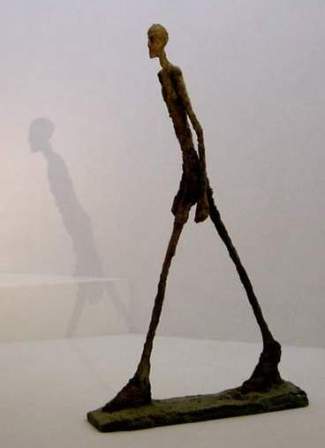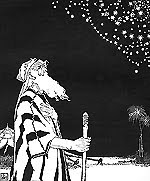What Is Empathy? A Definition: "The ability to understand another person’s circumstances, point of view, thoughts, and feelings. When experiencing empathy, you are able to understand someone else’s internal experiences" (Kristalyn Salters-Pedneault).
« How do I know that I know what I know – about you? This is clearly a question about epistemology, about knowledge. But it’s a special kind of knowledge, about others.
The ability to understand what another human being is thinking or feeling is most commonly known as empathy. The word empathy comes from the German [E]infühlung, which literally translates as “feeling into.” For thousands of years, empathy has attracted the attention of great thinkers in many fields of study » (Richard Lopez).
 |
| For isn't man is a tree of the field? Cf. Deuteronomy 20:19 ; The Human Tree Kim Graham, Man-Tree (Jotuntre), 2007 |
EMPATHY is the capacity of entering into, and so fully understanding (as if losing one's identity in) the spirit of a person, a work of art, etc. —Mariano Akerman
 |
| Mariano Akerman, Shape and Meaning: German Art, montage, 2010 |
 |
| Something in common |
Awareness is not necessarily empathy: I was complaining because I had no shoes, until I saw somebody that had no feet. —Persian proverb
 |
| I am a man, nothing human is alien to me. —Terence Kevin Christy, "You Remind Me of Me," NYT, 2008 |
"Most people are [...] strongly sensitive to rapport, to charm, to the social music in the person making the pitch" (Benedict Carey, You Remind Me of Me, The New York Times, 12.2.2008).
A cluster of illuminating definitions
• Daniel Batson: "A motivation oriented towards the other."
• D.M. Berger: "The capacity to put one's self in another's shoes."
• Jean Decety: "A sense of similarity in feelings experienced by the self and the other, without confusion between the two individuals."
• Nancy Eisenberg: "An affective response that stems from the apprehension or comprehension of another's emotional state or condition, and that is similar to what the other person is feeling or would be expected to feel."
• William Ickes: "A complex form of psychological inference in which observation, memory, knowledge, and reasoning are combined to yield insights into the thoughts and feelings of others."
• Heinz Kohut: "Empathy is the capacity to think and feel oneself into the inner life of another person."
• Carl Rogers: "To perceive the internal frame of reference of another with accuracy and with the emotional components and meanings which pertain thereto as if one were the person, but without ever losing the 'as if' condition. Thus, it means to sense the hurt or the pleasure of another as he senses it and to perceive the causes thereof as he perceives them, but without ever losing the recognition that it is as if I were hurt or pleased and so forth."
• Roy Schafer: "Empathy involves the inner experience of sharing in and comprehending the momentary psychological state of another person."
• Simon Baron-Cohen: "Empathy is about spontaneously and naturally tuning into the other person's thoughts and feelings, whatever these might be" (+).
 |
| Don Quijote y Sancho Panza sobre Clavileño el Alígero Pintura de Manuel Monedero |
La empatía (del griego antiguo εμπαθεια, formado εν, 'en el interior de', y πάθoς, 'sufrimiento, lo que se sufre'), también llamada inteligencia interpersonal (Howard Gardner: Teoría de las inteligencias múltiples) es la capacidad cognitiva de percibir la condición de otro individuo a partir de un sentimiento de participación emocional en la realidad que afecta a esa persona.
 |
| Anselm Kiefer, Shulamit, detalle, 1983 |
• "Siempre que alivies el dolor de otro ser humano, tu vida no será en vano"—Helen Keller.
• "El gran don de los seres humanos es el poder de la empatía"—Meryl Streep.
• "La empatía es la capacidad de pensar y sentir la vida interior de otra persona como si fuera la propia"—Heinz Kohut.
 |
| Mariano Akerman, Forma y Significado del Arte de Alemania, montaje, 2010 |
En otras palabras, empatía es ponerse en el lugar del otro pero teniendo presentes sus deseos, prejuicios, valores, motivaciones, recursos, habilidades, etc. Empatía implica comprender qué y cómo otra persona puede estar sintiendo en un momento dado, al considerar lo que ella tiene dentro de sí misma, e intentar sentirlo como propio. Para ello es necesario ser conscientes de todo lo que ha podido vivir una persona para llegar a sentir como siente, a actuar como actua, y a pensar como piensa (adaptado a partir de esta nota).
Empatía es la capacidad de compenetrarse, de entender plenamente la naturaleza y condición de una persona (tal como si se fuese esa persona, pero sin llegar a perderse en ella). Lo mismo es aplicable a la obra de arte, cuando se la contempla y se comprende su razón de ser, colcándose el espectador en el lugar del autor, considerando el punto de vista del mismo y el contexto en el que la obra en cuestión ha sido realizada. Es entonces cuando se da la empatía. —Mariano Akerman
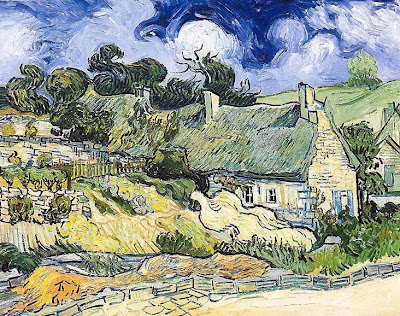 |
| Vincent van Gogh, Casas en Auvers-sur-Oise, 1890 |
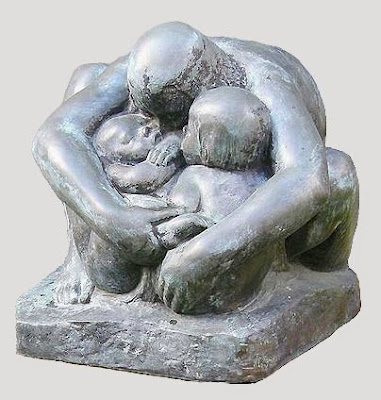 |
| Käthe Kollwitz, Madre con mellizos, bronce, 1927-37 |
 |
| Wassily Kandinsky, Composición IV, 1911 |
 |
| René Magritte, El sabor de las lágrimas, 1948 |
 |
| Barbra Kruger, Pensando en ti, c. 1980 |
 |
| Francis Bacon, Autorretrato, 1973 |
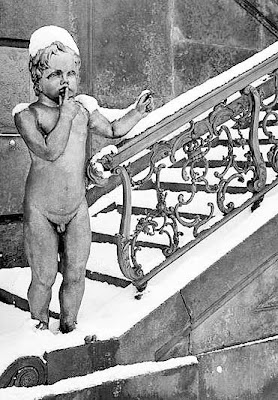 |
| Max Baur, Querubín, Stadtschloß de Potsdam, 1928-44 Deutches Bundesarchiv Bild 170-272 |
 |
| Paul Klee, Insula dulcamara | Isla agridulce, 1938 |
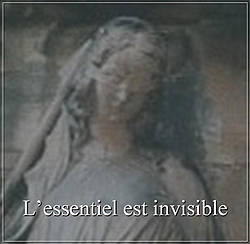 |
| Mariano Akerman, L'essentiel est invisible, 2006 |
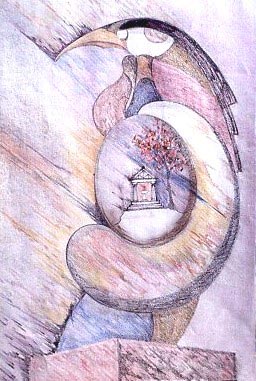 |
| Akerman, De la importancia de lo auténtico, 1988 |
 |
| Akerman, Templo de Inclusión, 1987-88 |
 |
| ¿No es acaso el hombre un árbol del campo? Kim Graham, Árbol-Hombre (Jotuntre), 2007 |
Links
• Empathie
• The Swiss-German Project
• Creadores suizos y alemanes modernos

















